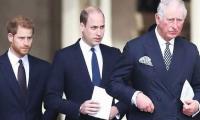For more than two decades JITs have been bringing Paharis, Commandos, Motas etc on to our TV screens, but analysts outside Karachi fail to understand why a party with a militant wing is not losing its grip on the metropolitan city, despite the heavy presence of the Rangers.
Many of them think that the MQM does not enjoy much support in the city, and that the election results only reflect muscle and not popularity. The recent entry of former city nazim, Mustafa Kamal, has further cemented this perception.
But for a better understanding, one needs to look at the power struggle for control of this city and the insecurities of its inhabitants, who gave birth to this party. The current state structure does not allow elected representatives of Karachi to have any say in its matters. Having a say in the federal government requires considerable seats from Punjab. For the provincial government considerable seats are required from rural Sindh. There is also an unwritten agreement under which the chief minister of Sindh can only be a Sindhi.
One also needs to count into the equation the variable of law-enforcement agencies in Karachi. The Rangers were deployed in the city in the mid-80s and since then they are an integral part of the power struggle within the city. Their stakes can be gauged by visiting the University of Karachi, considerable land of which is occupied by this elite force. Even a conservative estimate suggests that more than 50 percent land in Karachi is cantonment or semi-cantonment area. According to some reports, ex-servicemen are also involved in security and recovery businesses.
After the 1972 Urdu-Sindhi riots, migrants from India started feeling a sense of alienation with the state – especially the Sindh government – but the wave of violence during the Afghan migration in the 1980s gave birth to a party that was more about securing the Urdu-speaking neighbourhoods than contesting elections. In Nichola Khan’s words, the “MQM offered security and protection, including from Karachi’s highly politicized, corrupt and violent police force; militants gained power, respect and a perverse route to social and economic advancement when conventional routes seemed corrupted and blocked.”
The militancy and street power of the MQM constitutes a semi-state like structure for Mohajirs within the Pakistani state, with sector and unit offices at the mohalla levels looking after citizens’ needs. It is sad but true that the people of Karachi trust sector offices more than police stations and government offices, since state institutions are mostly run by officials who are not natives of the city. The party fund collected – forcefully or by will – also works like a taxation structure.
Reports of Jinnahpur maps being discovered in the 1990s, and the confiscation of Nato weapons by the Rangers or allegations of association with RAW have not stopped the Urdu-speaking population from turning to Nine-Zero for a solution to their problems. The MQM remains a more reliable institution than the Sindh secretariat for those residing in urban Sindh. Altaf Husain has been running not a political party but a parallel governance structure for urban Sindhis.
Despite such strength, this state-like organisation operates under constant pressure. The party has a history of clashes with almost every major ethnic group as well as the powerful military establishment. Its habit of raising the Mohajir province slogan whenever its relations with the PPP hit a low has resulted in animosity between ethnic Sindhis and the Urdu-speaking population of Sindh.
On the other hand, the powerful state institutions fear that there are also separatist tendencies within the party. And even if not, strong connections outside Pakistan and the militant street power make it difficult to control the party. This fear has not only led to multiple operations against the party but militant groups from other communities and parties have also been propped up to counterbalance the MQM.
Because the MQM handles the situation in a state-like manner, coercively dealing with these communities and groups, it fails to find any support outside Urdu-speaking Sindhis. The party has often tried to broaden its base, even changing its name from Mohajir to Muttahida, but their retreat to the Mohajir shell whenever they face the heat has restricted them while violent clashes with other communities have isolated them.
Karachi did enjoy a brief period of peace during Musharraf’s regime, as severed relations with the PPP and the PML-N forced a military government to end its animosity with the MQM. With a strong governor as well as major ministries at the provincial and federal level, and effective local government, neither the MQM nor the Urdu-speaking populace needed sector offices. UC offices were there to perform those functions and the interior minister of the MQM ensured that the police remained subservient to the elected representatives of the city.
As soon as Musharraf left, and the PPP and PML-N returned to the political scene, the elected representatives of Karachi lost all those privileges. Local government elections did not take place, and interior and other important ministries resided with the PPP which won the majority seats from rural Sindh. Soon violence returned to Karachi along with new turf wars, where the Peoples Aman Committee and the ANP were on the one side and the MQM on the other.
Zulfiqar Mirza’s aggressive policies against the MQM, despite the PPP’s willingness to work with the party, suggest that the establishment wanted to take back control of Karachi. With limited influence in federal and provincial governments and absence of local bodies, only the strong state-like structure of the MQM is a hindrance to the powerful establishment. After the 2013 elections the PTI emerged as a popular party that could be pitched against the MQM.
The raids on Nine-Zero, constant state narrative against the MQM, the arrival of the PTI and now Mustafa Kamal’s onslaught are clearly a planned attack on the former allies of Musharraf. Whether the aim is to clip the wings of Altaf’s party or to completely eliminate them is not clear. What is clear is that this strategy will not end violence. Crushing a political party does not crush the complex insecurities beneath the violence in Karachi.
The writer is an educationist andformer central organiser of the
National Students Federation (NSF).
Email: k.a.nayyer@gmail.com
The post-election situation will be troublesome and worrisome for Modi
Most favourable concept developed so far revolves around public-private partnerships
There is only one way forward: cut non-development expenditures, including non-combat defence expenditure
The plan aims to ensure financial stability, control inflation, and promote economic prosperity
Currently, a staggering 60 per cent of government revenue is being wasted on interest payments
It seems that Beijing’s goodwill, stronger financial stature, principle of non-interference in domestic affairs and...







